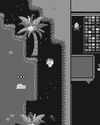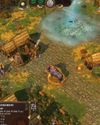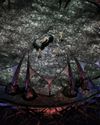
Since its release in 2015, Cities: Skylines has received 35 DLC packs. Granted, some of these are either content-creator packs or song-bundles for the in-game radio stations, but even if you discount them, it would leave 11 full-blooded expansions for Colossal Order's landmark city-builder.
I've always wondered what the game looks like with everything installed, how the expansions collectively change the vanilla experience. Does it simply result in a bigger city, or do the expansions fundamentally alter how those cities feel and act? More importantly, does all that extra stuff make for a superior, more fulfilling experience, or does it simply make the game cumbersome and overcomplicated? Well, after making the UK PR for Cities Skylines cry, I've got every major expansion installed, and I'm not afraid to use them.
Before we break ground on this new metropolitan project, we need to do a little admin. I'm playing Skylines on the standard game mode, with no alterations to the rules. For the map, I pick the first one on the list - Asanu Beach - as I want a typical example of a Skylines map, with no extremes one way or another. Finally, every feature of every expansion is enabled by default, which is a roundabout way of saying that disasters will be switched on, and I'll have to deal with whatever catastrophes the game throws in my direction.
Getting started is always one of the trickier moments in a Skylines game. Your opening funds can run dry quickly, and it's easy to overspend by making your initial layout too big. So I keep things simple, drawing a long, two-lane road and looping it back around to reconnect with the highway, then evenly distributing residential, commercial, and industrial zoning along it. Starting with a two-lane road may cause problems farther down the line, but at least it keeps costs down.
ZONED OUT
This story is from the {{IssueName}} edition of {{MagazineName}}.
Start your 7-day Magzter GOLD free trial to access thousands of curated premium stories, and 9,000+ magazines and newspapers.
Already a subscriber ? Sign In
This story is from the {{IssueName}} edition of {{MagazineName}}.
Start your 7-day Magzter GOLD free trial to access thousands of curated premium stories, and 9,000+ magazines and newspapers.
Already a subscriber? Sign In

A New Dawn - The rise, fall and rise again of PC Gaming in Japan
The so-called 'Paso Kon' market (ie katakana's transliteration of 'Pasonaru Computa') in Japan was originally spearheaded in the 1980s by NEC's PC-8800 and, later, its PC-9800.

MARVEL: ULTIMATE ALLIANCE
Enter the multiverse of modness.

SLIDES RULE
Redeeming a hated puzzle mechanic with SLIDER

GODS AND MONSTERS
AGE OF MYTHOLOGY: RETOLD modernises a classic RTS with care

PHANTOM BLADE ZERO
Less Sekiro, more Wo Long: Fallen Dynasty

STARR-MAKING ROLE
Final Fantasy XVI's BEN STARR talks becoming a meme and dating summons

THIEF GOLD
Learning to forgive myself for knocking out every single guard.

HANDHELD GAMING PCs
In lieu of more powerful processors, handhelds are getting weirder

FAR FAR AWAY
STAR WARS OUTLAWS succeeds at the little things, but not much else shines

FINDING IMMORTALITY
Twenty-five years on, PLANESCAPE: TORMENT is still one of the most talked-about RPGs of all time. This is the story of how it was created as a ‘stay-busy’ project by a small team at Black Isle Studios